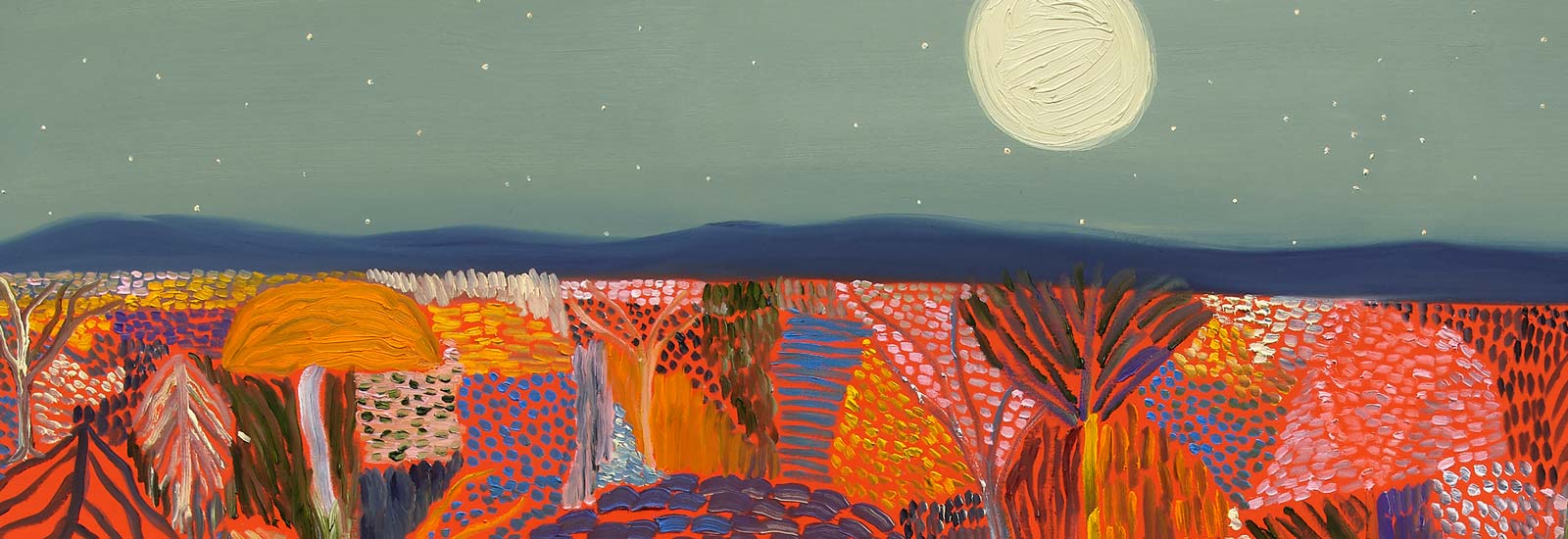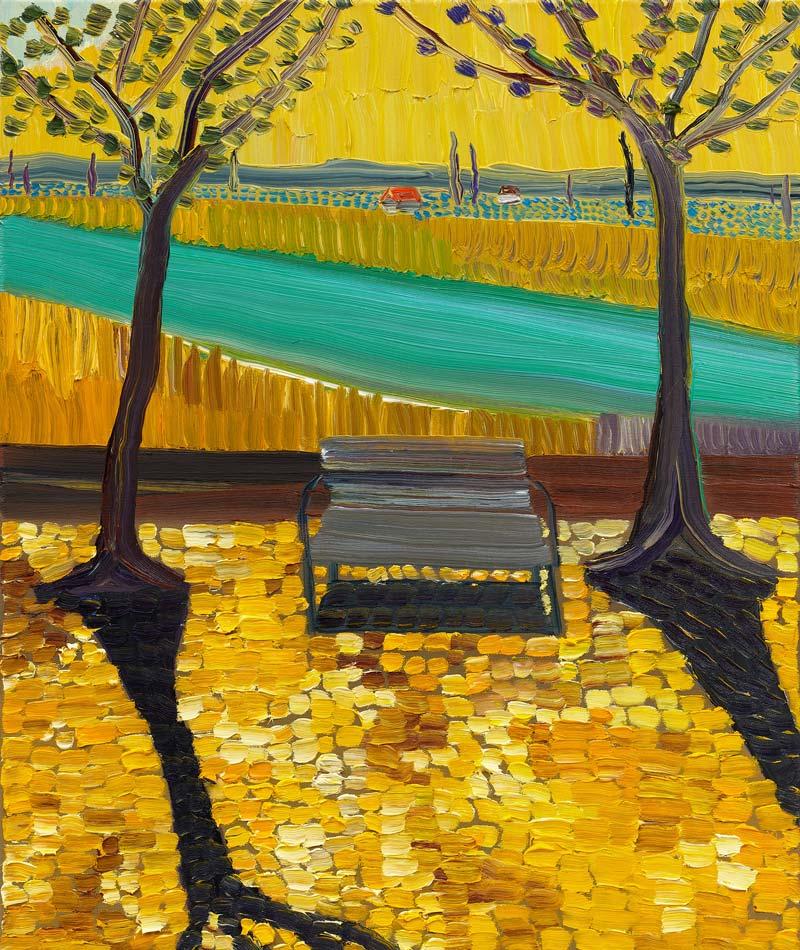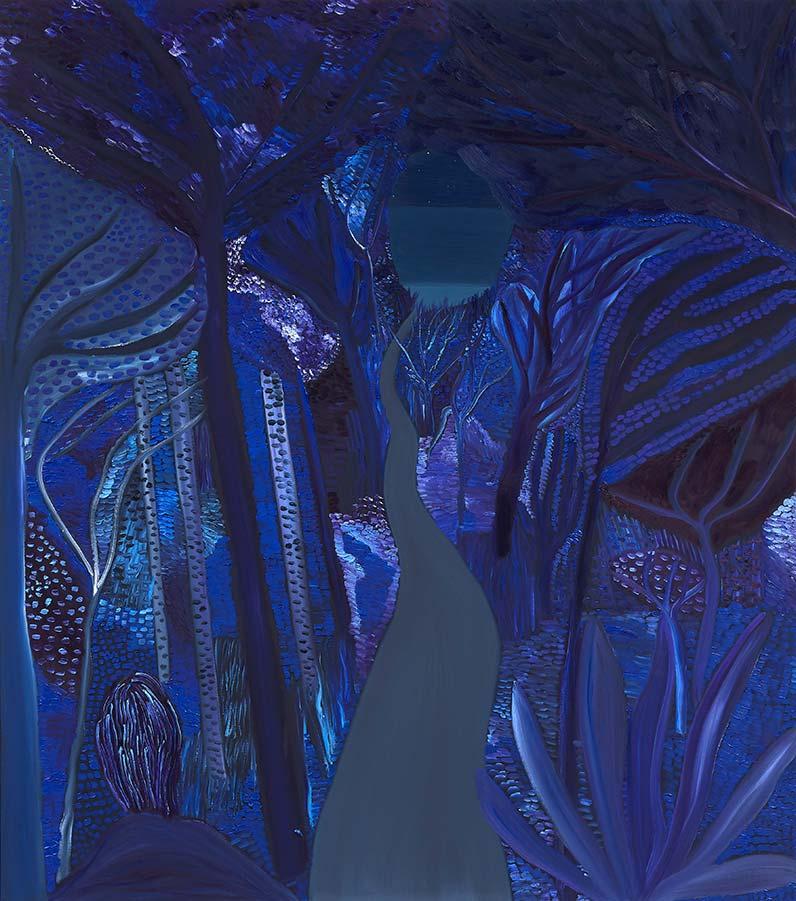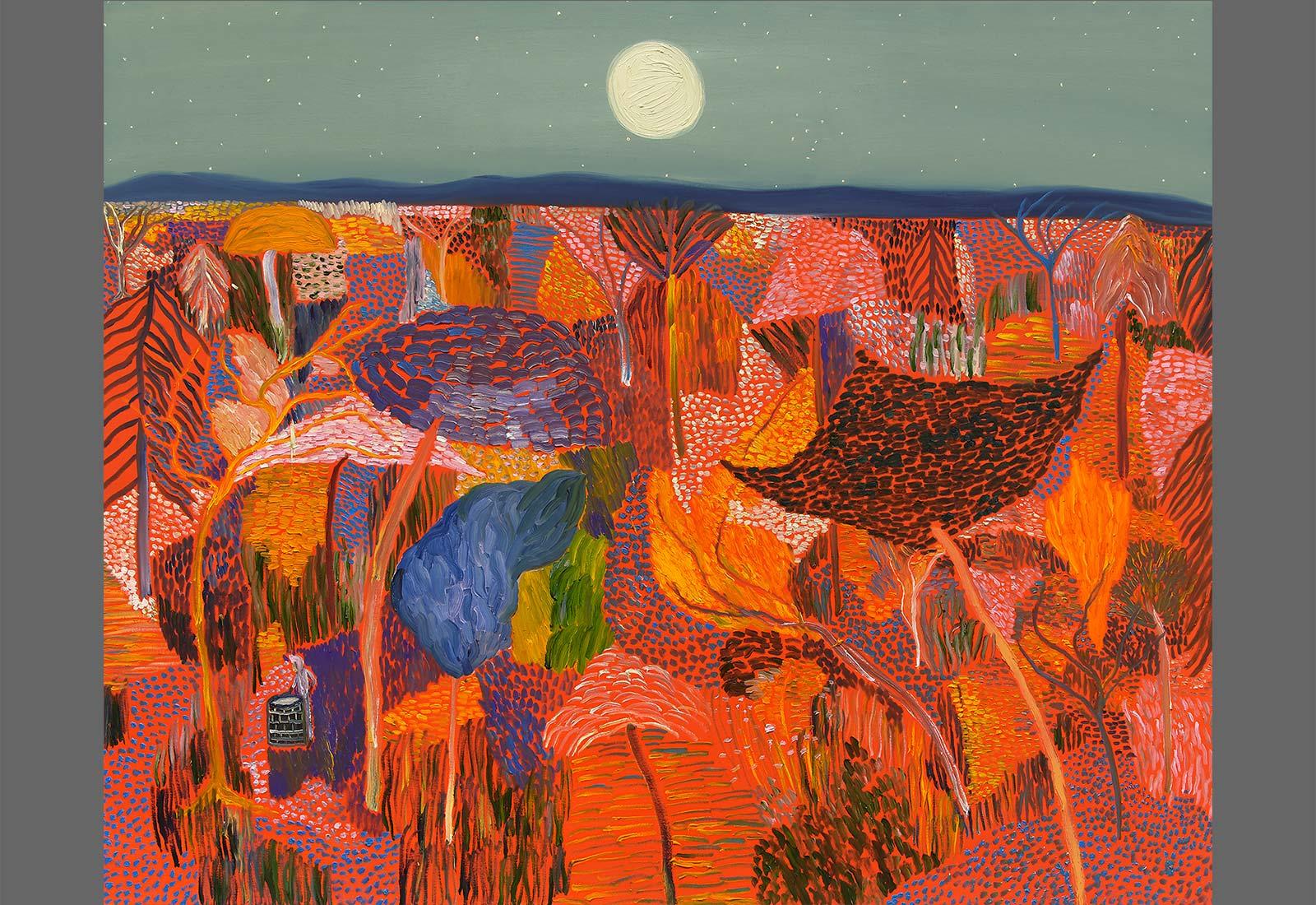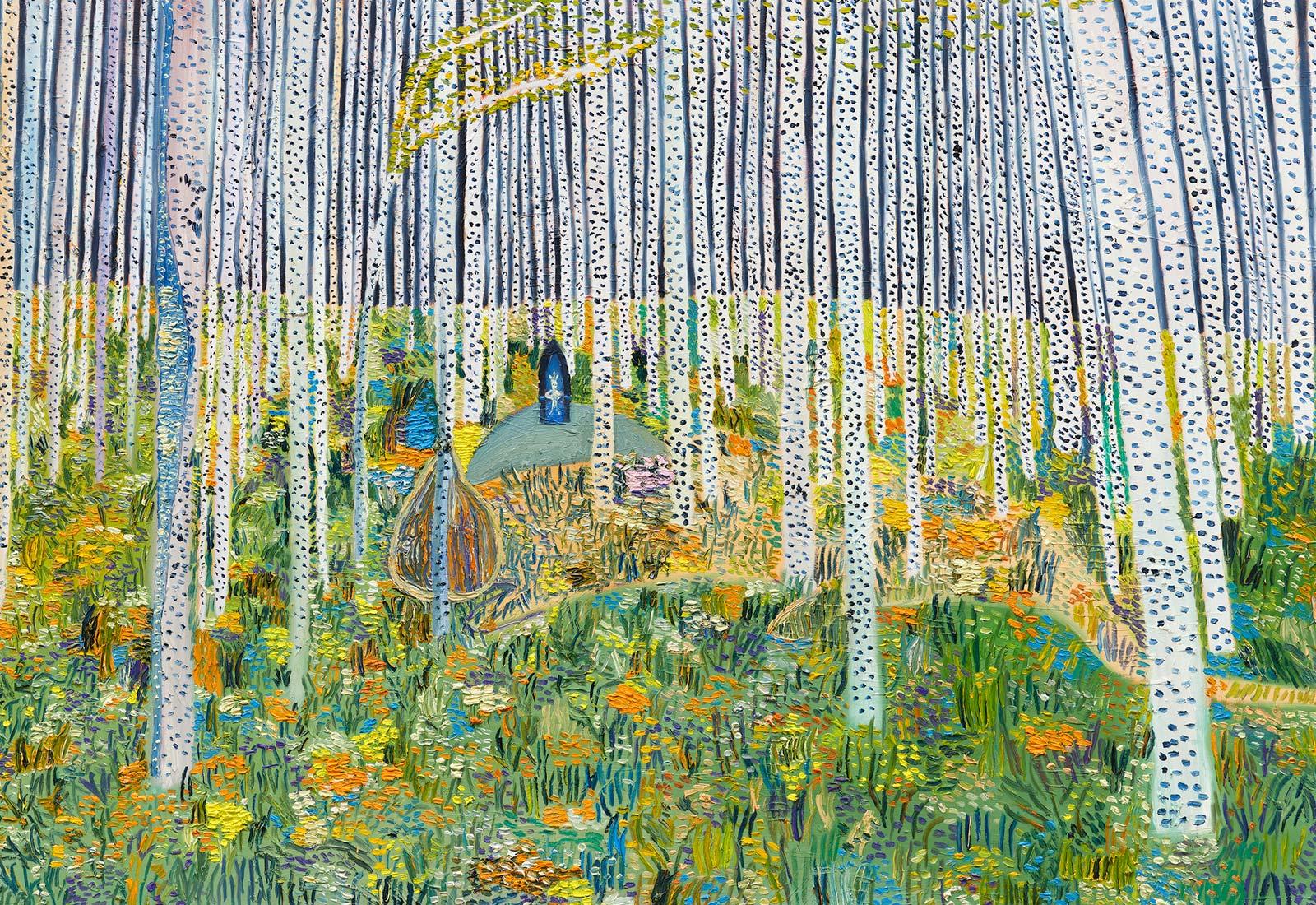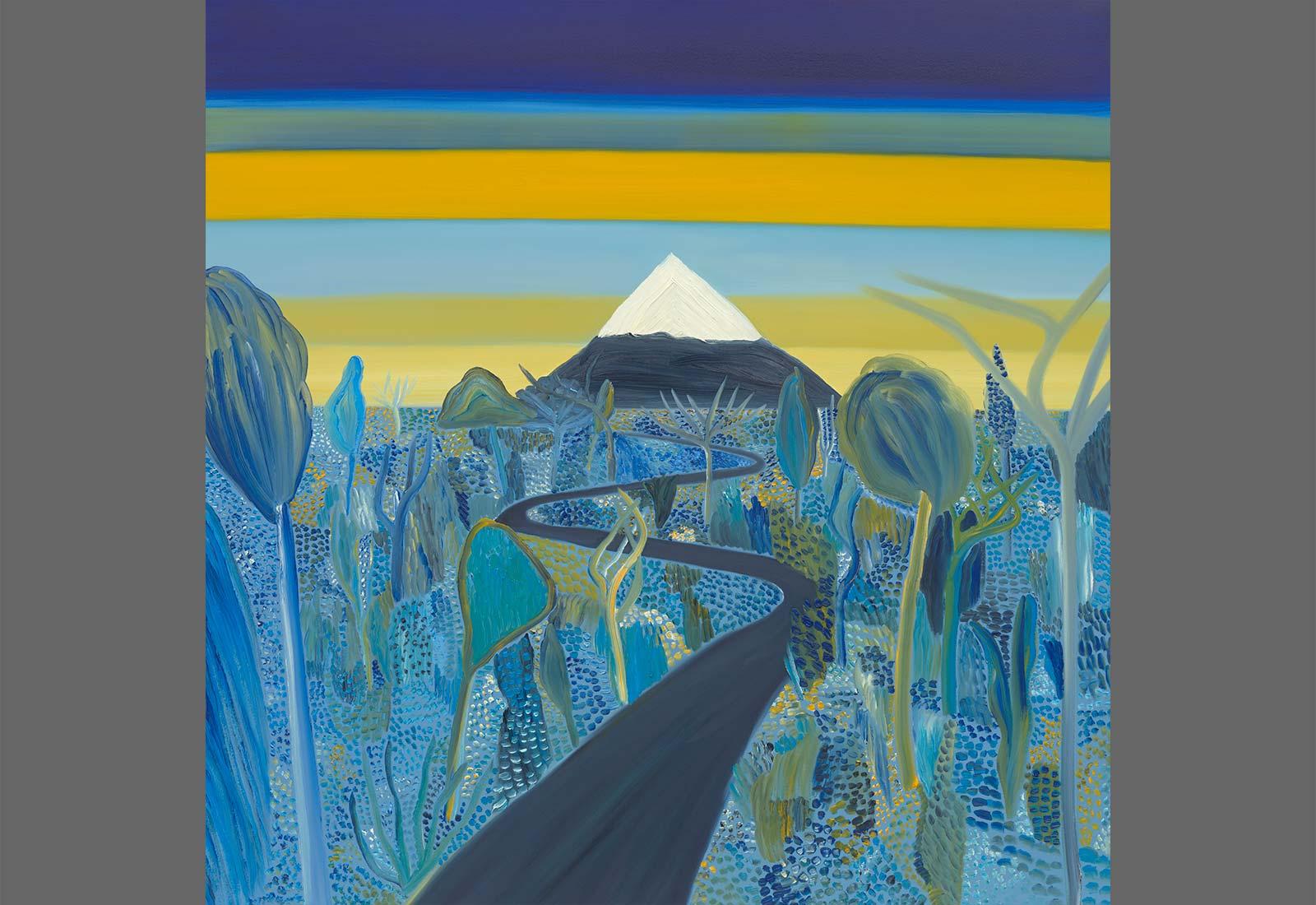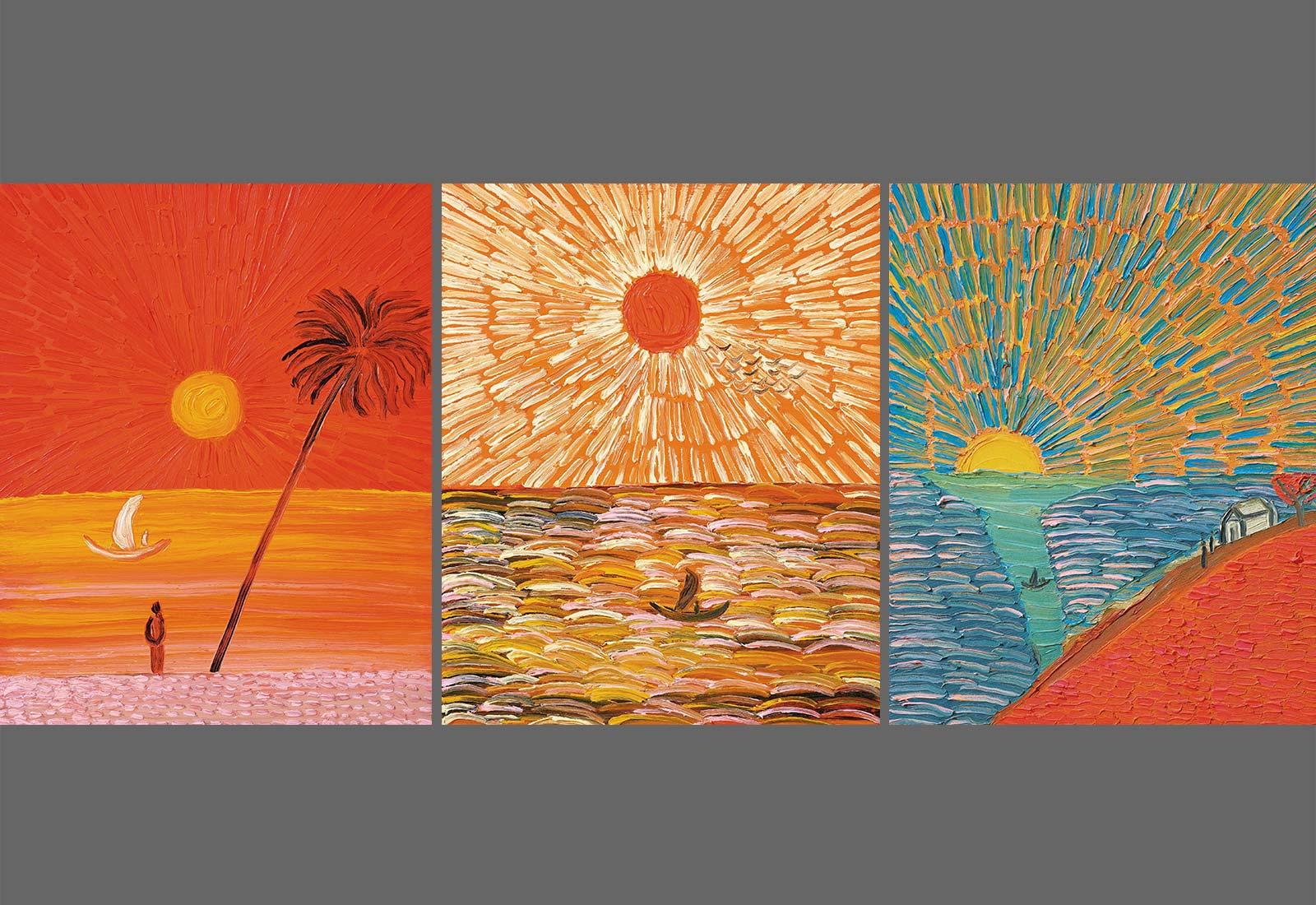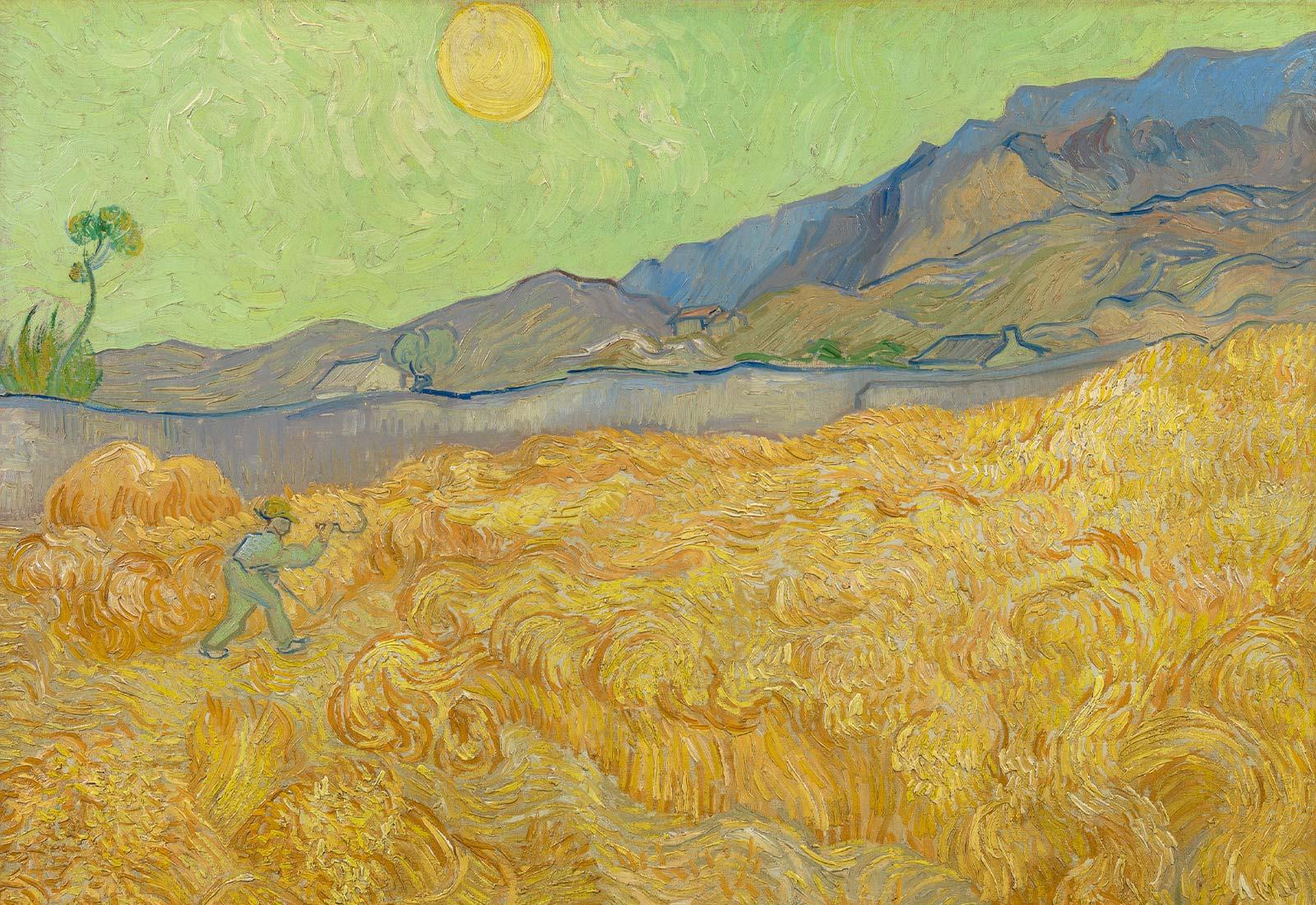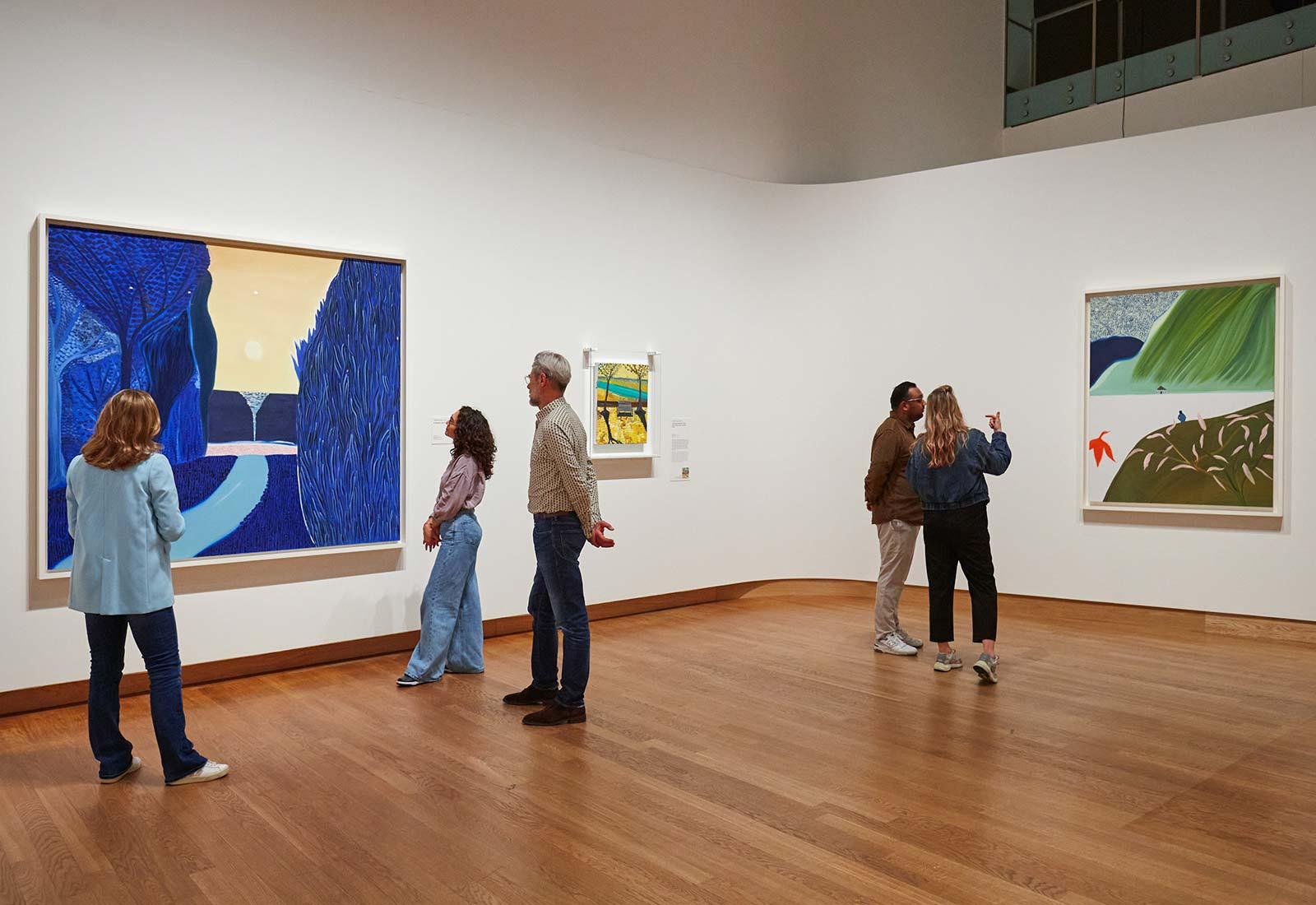The lines of inspiration between artists throughout time are endless. The Van Gogh Museum in Amsterdam offers a powerful example of this with Matthew Wong/Vincent Van Gogh: Painting as a Last Resort. Even though the artists lived 130 years apart, Van Gogh’s influence on Wong is unmistakable.
The work of both painters is singular, energetic, primal, thick with color and paint, vibrant, explosive, and beloved. You don’t simply view their work, rather you enter these worlds emotionally. Their paintings swirl with vivacious impasto saturated with color, allowing you to feel the energy surging in each brushstroke. The physicality and emotional pressure explode out from each artist’s canvas.
The first retrospective in Europe features 41 paintings and 21 works on paper by Wong, and five paintings and one drawing by Van Gogh. Each section, or chapter, is introduced by one piece from Van Gogh, as an entrypoint to Wong’s work: Learning by Doing; Expressions Through Color; Bold Brushwork; Black and White; Imagination and Reality; Inner Landscape; Wong’s Death; and the last chapter, featuring one Wong painting, Path to the Sea.




